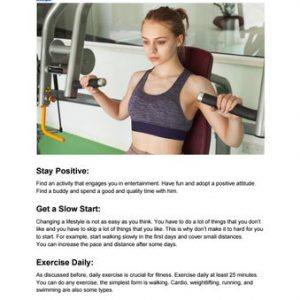We’ve all been there- looking in the mirror or trying on new clothes and realizing we’d love to be a bit skinnier. But with the endless flood of unhealthy temptations and diets that are just too strict, it’s tough to stay on track. Fortunately, you don’t have to sacrifice your health to get lean; all you need is some discipline and smart eating skills. So here’s the good news- we’ve got some prime tips and tricks that will help you stay skinny without breaking the calorie bank. Read on for “” and get ready to feel healthier and slimmer than ever.
My Contents
- 1. Unlocking the Hidden Secrets of Eating Healthy and Staying Slim
- 2. Simple Tips to Help Stay on Track with Healthy Eating
- 3. How to Use Food Challenges to Reach Your Weight Goals
- 4. Overcoming the Hurdles of Healthy Eating – One Meal at a Time
- 5. Practical Ideas to Help Reach Your Healthy Eating Goals
- My Diet Answers

1. Unlocking the Hidden Secrets of Eating Healthy and Staying Slim
Eating well and staying slim today can be an immense challenge, especially in a world full of convenience fast food options. However, with a bit of effort and clever planning, you can unlock the hidden secrets of eating healthy and staying slim!
1. Ditch the Sugar: From chocolate bars to sodas and hidden sugar in processed foods, sugar is everywhere in our diet. Too much sugar can be detrimental to our health and our waistlines. Try to reduce sugar as much as possible, and look to healthier alternatives such as:
- Using natural sweeteners such as honey or pure maple syrup
- Adding adequate amounts of fresh fruit to your meals
- Limit sweet treats and desserts
2. Add More Veggies: Green leafy veggies are a great way to add nutritious benefits to your diet, without increasing your calorie intake. Make sure to add in a variety of colourful veggies to your meals, and increase the amount of meals that include them. Spice them up with a variety of seasoning options, and some healthy fats such as blended extra virgin olive oil or avocado!
3. Don’t Skip the Protein: Protein is an important macronutrient that helps maintain muscle mass, which is great for fat-burning and overall healthy body composition. Try to incorporate lean proteins such as white fish, chicken, legumes, tofu, and eggs to satisfy your cravings and your muscles!
2. Simple Tips to Help Stay on Track with Healthy Eating
Dietary choices are probably the most important decisions you make in a day. Healthy eating helps to provide essential nutrients, keep energy levels up, and prevent illness. Even when your schedule is full, taking steps to ensure your eating habits are balanced and nutritious should always be a priority. Here are a few simple tips to help you stay on track with healthy eating.
Plan Ahead
- Take some time to plan out meals for the coming week, and make a grocery list.
- Choose nutrient-dense foods such as whole grains, unsaturated fats, and proteins.
- double check your grocery list before each visit to make sure you are buying everything you need.
When you plan ahead, you minimize the chance of unhealthy indulgence that can result from last-minute or impromptu eating decisions.
Prepare Food Ahead of Time
- Make a habit of preparing multiple meals ahead of time.
- Make extra servings of meals and freeze when possible.
- Take advantage of slow cooker recipes as they can make meal-prep easier.
Having premade, nutritious meals sitting in your fridge or freezer puts you in a much better position to make healthy choices. Even if you only have a moment to grab something quickly, at least you have a healthy option ready.
Eat Mindfully
- Sit down at a table when eating, instead of on the couch.
- Eliminate distractions, such as phones, televisions, computers, and books.
- Chew your food slowly and savor the smell, flavor, and texture.
Research has shown that practicing mindful eating can reduce overeating and ultimately help with managing portion control. Eating mindfully helps you become accustomed to the signals of fullness and helps maximize the nutritional value of the food you’re consuming.
3. How to Use Food Challenges to Reach Your Weight Goals
Are you looking for ways to reach your weight goals? Food challenges might be the answer for you! Here are a few tips to get started.
- Set Goals: Think about what you want to accomplish with your challenge. Is it to cut down on unhealthy snacking, or to challenge yourself to cook healthier meals? Setting clear, achievable goals will help to motivate and guide you as you go through the challenge.
- Create a Plan: Take the time to come up with a step-by-step plan that will help you to reach your goal. For example, if you want to cut down on unhealthy snacking, you could come up with a plan to replace those snacks with more healthy options.
- Stay Motivated: Once you’ve set your goals and created a plan, it’s important to stay motivated and stick to the challenge. Tell your friends and family about your challenge so they can help cheer you on. Celebrate small successes along the way and don’t be discouraged by minor setbacks.
Using food challenges can be a fun and effective way to achieve your weight goals. Take the time to contemplate your objectives, develop an action plan that works for you, and don’t forget to give yourself credit for the progress you make. With consistency and perseverance, you’ll be achieving your goals in no time!
4. Overcoming the Hurdles of Healthy Eating – One Meal at a Time
For many of us, the struggles of maintaining a healthy diet can be daunting. But we should always remember that change comes one healthy meal at a time. By making small and incremental improvements to your diet, you’ll be well on your way to achieving better health.
- Start by making healthier food choices. Try to discard of empty calorie snacks like potato chips, soda, and processed junk food, and replace them with more nutritious options like fresh fruit and vegetables.
- Set a few reasonable goals. Little changes such as adding a cup of vegetables to your meal every day or reducing your processed sugar intake can have a huge impact when done regularly.
- Enlist the help of your family or friends. A healthy eating plan will take more work than simply buying fast food every night. Ask your loved ones to help prepare healthy meals and take turns doing the cooking.
By forming good habits over time, healthy eating will become second nature. Take it one step at a time and focus on the short-term goals. You won’t regret it when you reach your healthy lifestyle goals.
5. Practical Ideas to Help Reach Your Healthy Eating Goals
When it comes to improving your diet, it’s important to set healthy eating goals and take practical steps to reach those goals. Here are five helpful ideas:
- Start Small: Don’t become overwhelmed by trying to make big, sweeping changes right away. A better approach is to begin with easy, achievable goals that you can work on steadily. For example, you could start with a set daily goal of two servings of vegetables.
- Create An Action Plan: Have an actionable plan that lists steps to help you reach your healthier eating goals. Start by making a grocery list of nutritious items, then create a menu with meals and snacks that you’ll eat throughout the week.
- Fill Your Pantry: With your action plan in hand, go shopping to stock up on the healthy things you need to make nutritious meals. If you’re pressed for time like most people, keep some pre-prepared, frozen meals on hand, and look for quick and easy recipes that can help you get dinner on the table faster.
By taking simple steps to set yourself up for success, you can easily take charge of your diet and start eating healthier. Don’t hesitate to start small and build on your progress as you go! A bit of planning ahead, along with practical strategies, will help you reach your healthy eating goals before you know it!
My Diet Answers
Q: What is the best way to eat healthy?
A: A balanced diet is key for eating healthy and staying skinny. Include a variety of fruits and vegetables, lean proteins, and whole grains in your everyday diet. Avoiding processed and sugary foods helps significantly.
Q: What can I do if I struggle to stick to a healthy eating routine?
A: It’s natural to get bored of healthy eating – try to challenge yourself and come up with new ideas. Try out different recipes, add more plant-based foods into your diet, and make sure to take breaks in order to avoid feeling overwhelmed.
Q: What should I do if I have a food craving?
A: Distract yourself with activities and be mindful of your thought patterns. Take a walk, listen to music, or practice deep breathing to help manage your cravings. It is also helpful to have healthy snacks around so that if you do give in to your cravings, it won’t be as unhealthy.
No matter how challenging it may seem to stay healthy and slim, it’s always worth it. Making little adjustments to your eating habits can make a big difference to your health and energy levels. So why not give it a try? Eat well and stay fit!










